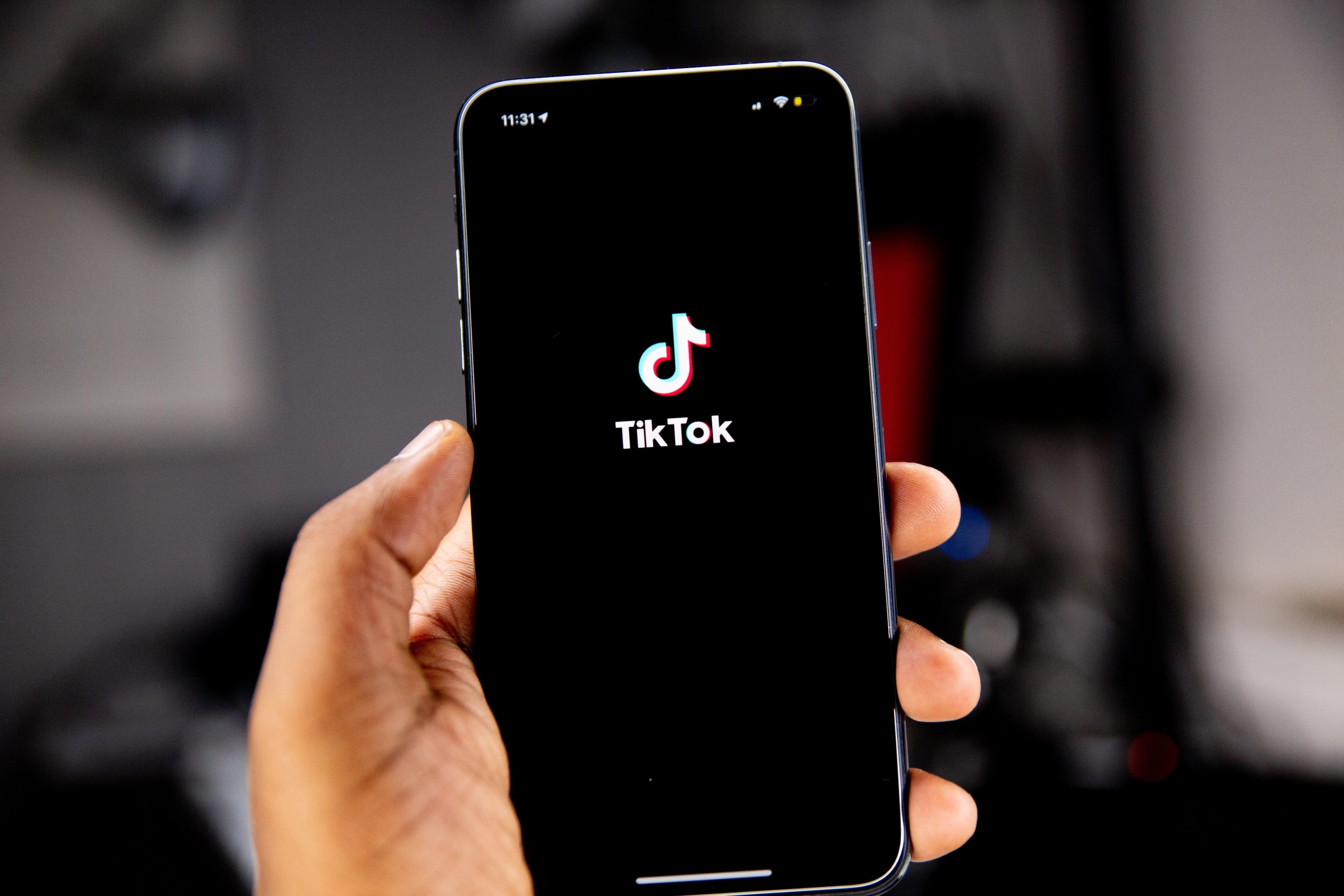In recent years, social media platforms have played a significant role in shaping consumer trends, and the fashion industry is no different.
While social platforms have been criticised as promoting constant, new consumption of fast fashion, social platforms have also emerged as powerful catalysts in promoting sustainable fashion. These digital spaces (including social media apps such as TikTok and online communities) are playing a pivotal role in raising awareness, fostering engagement, and driving meaningful change in the fashion industry.
In this article, we will explore how social platforms are driving sustainable fashion, supporting an increase in resale of second hand and empowering individuals to make more conscious, environmentally friendly choices.
Gen Z Influence and Authenticity
TikTok’s user base is predominantly comprised of Gen Z, a generation known for its passion for social and environmental causes. Through engaging content, Gen Z influencers have been instrumental in driving awareness and promoting sustainable fashion. They use their platforms to educate and inspire their followers, emphasising the importance of ethical sourcing, slow fashion, and responsible consumption. TikTok’s authenticity and relatability enable these influencers to connect with their audience quickly and easily, as well as allowing them to positively influence their shopping habits.
Gen Z influencers leverage the authenticity and relatability of TikTok to connect with their audience on a personal level. Through engaging content, they emphasise the importance of ethical sourcing, slow fashion, and conscious shopping habits. By showcasing their own sustainable fashion choices, thrifted finds, and upcycled outfits, these influencers demonstrate how style and sustainability can work together.
Specifically, TikTok’s short-form video format allows for quick and visually appealing content, making it ideal for delivering impactful messages. Influencers use their creativity to craft informative and entertaining videos that break down complex sustainability concepts into digestible, relatable content. From highlighting the environmental impact of fast fashion to sharing tips on wardrobe recycling and capsule wardrobes, TikTok influencers empower their followers to make more informed choices.
Beyond TikTok, other social platforms such as Instagram and YouTube are also helping to spread the message sustainable fashion among Gen Z. These platforms allow influencers to delve deeper into topics through longer-form content, such as detailed product reviews, sustainable brand features, and tutorials on thrifting and DIY fashion.
Influencer Power and Advocacy
Social platforms provide a platform for influencers and content creators to amplify their voices and advocate for sustainable fashion. Influencers, particularly those passionate about ethical and eco-friendly practices, use their platforms to share knowledge, highlight sustainable brands, showcase eco-conscious outfits, and engage in meaningful discussions. Their influence inspires their followers to rethink their fashion choices, encouraging them to opt for sustainable alternatives.
Viral Challenges and Thrift Hauls
TikTok is known for its viral challenges, and sustainable fashion has become a prominent theme. Hashtags like #ThriftFlip and #SecondHandHaul have gained traction, encouraging users to share their thrift store finds and creative upcycling projects. These challenges showcase the potential of second-hand clothing and inspire others to embark on their sustainable fashion journey. Through thrift hauls, users demonstrate that fashionable and unique outfits can be assembled without contributing to fast fashion’s harmful impact on the environment.
Education and Awareness on Sustainability
Social platforms serve as valuable educational resources, spreading awareness about the environmental and social impacts of the fashion industry. Through infographics, videos, articles, and dedicated posts, users gain insights into the detrimental effects of fast fashion and the benefits of sustainable alternatives. This information empowers individuals to make more informed decisions and prompts them to consider the environmental and ethical implications of their fashion choices.
Social Listening for Fashion Brands
By actively participating in social listening on platforms like Instagram, Twitter, and Facebook, fashion brands gain valuable insights into consumer perceptions, preferences, and concerns regarding sustainability. This allows them to refine their strategies, communicate effectively, and continuously improve their sustainability initiatives, fostering a more authentic and transparent relationship with their audience.
This can include monitoring brand mentions, engaging in conversations with consumers, analysing user-generated content and responding to issues or concerns regarding their sustainability commitments and policies.
Community Building and Shared Sustainable Values
Social platforms foster communities centered around sustainable fashion. These communities bring like-minded individuals together, providing a space for shared experiences, tips, and recommendations. By joining these communities, users feel a sense of belonging and support, which strengthens their commitment to sustainable fashion. The collective engagement and discussions within these communities create a ripple effect, influencing others to adopt sustainable practices.
In particular, TikTok’s emphasis on community building has created a network of like-minded individuals passionate about sustainable fashion. Users engage in discussions, share advice, and recommend eco-friendly brands and products. This peer-to-peer recommendation system has become a powerful tool for spreading awareness and driving demand for sustainable fashion. As users see their peers embracing sustainable choices, they are motivated to follow suit, resulting in a collective shift towards more conscious consumerism.
Increasing Transparency and Accountability in Fashion Brands
TikTok’s influence has compelled fashion brands to be more transparent and accountable. Consumers are increasingly demanding information about supply chains, labour practices, and environmental impact. To meet this demand, brands are adapting their marketing strategies to highlight sustainable practices and ethical manufacturing. TikTok serves as a platform for brands to showcase their sustainable initiatives, ensuring that consumers can make informed choices and support ethical companies.
Social platforms compel fashion brands to prioritise transparency and accountability. Brands that embrace sustainability and ethical practices gain recognition and support from social media users. Consequently, fashion brands are motivated to adopt sustainable initiatives, reduce their carbon footprint, and engage in responsible business practices to meet consumer expectations.
Fashion and consumer brands are increasingly leveraging the power of TikTok in particular to promote their sustainable supply chains. While greenwashing can be a concern, fashion brands such as are using TikTok to share behind the scenes footage, production processes and stages in the supply chain to support their sustainable image.
A recent survey concluded that 86% of Americans believe transparency from businesses is more crucial than ever. With the rise of social media, both brands and consumers have increased access to each other, leading to higher expectations for transparency across the board. The real time, open access for consumers to brands can be a huge driver to genuinely increase sustainability.
Calling out Greenwashing with Social Media
Social media users are also utilising the power of social media and social content platforms to call out greenwashing. Often, sustainability is used as a powerful marketing tool rather than a business goal, and platforms such as TikTok and Instagram are giving consumers the power to challenge fashion brands on their claims, holding them accountable.
This can include:
- Sharing Information: Consumers are sharing information about greenwashing practices through posts, stories, and videos on platforms like Instagram, Twitter, and TikTok. They expose misleading sustainability claims made by brands and educate their followers about the true environmental impact of certain products or practices.
- User-Generated Content: Consumers create user-generated content (UGC) that highlights discrepancies between a brand’s sustainability claims and its actual practices. This can include comparing marketing materials with behind-the-scenes footage, product packaging, or supply chain investigations. By sharing evidence of greenwashing, consumers spark discussions and encourage others to question the authenticity of sustainability claims.
- Hashtags and Campaigns: Social media users create hashtags and campaigns to unite individuals against greenwashing. These campaigns raise visibility and enable consumers to collectively voice their concerns.
- Influencers: Influencers and content creators play a vital role in calling out greenwashing. They use their platforms to expose deceptive practices and promote transparency in the fashion industry.
- Engaging with Brands: Consumers directly engage with brands on social media to question and challenge their greenwashing tactics. They leave comments, send direct messages, and share their concerns publicly, demanding accountability and transparency. By initiating conversations, consumers encourage brands to provide evidence of their eco-friendly practices.
- Amplifying Facts: Social media platforms allow industry insiders, such as fashion journalists or bloggers to share their experiences and knowledge. They can shed light on specific brands or practices that may mislead consumers.
Collaborative Campaigns and Challenges
Social platforms facilitate collaborative campaigns and challenges that promote sustainable fashion. Hashtags like #SlowFashion, #SustainableStyle, and #SecondHandSeptember gain traction, encouraging users to share their sustainable fashion choices and challenge others to do the same. These campaigns create a sense of camaraderie and motivate users to actively participate in driving the sustainable fashion movement.
Second-Hand Marketplaces and Circular Economy
Social platforms also host second-hand marketplaces and promote the concept of a circular economy. Apps and websites dedicated to buying and selling pre-loved fashion items connect individuals seeking sustainable options. By giving second-hand clothing a platform, social platforms reduce waste, extend the lifespan of garments, and encourage a shift away from the “throwaway” culture perpetuated by fast fashion.
New research suggests that the second-hand clothing market is growing at an impressive rate, with resale expected to be worth $84 billion by 2030, surpassing the $40 billion value projected for fast fashion. Apps such as Vinted, Depop and Etsy are at the forefront of this shift; both with consumers looking to buy second hand, and with many people identifying second-hand resale as a career opportunity.
Research has shown that this growth is driven by younger consumers, with 40% of millennials and Gen Z shoppers embracing second-hand fashion. Social media platforms like TikTok and Snapchat play a significant role in promoting the appeal of thrift shopping, with hashtags like #secondhandfashion gaining millions of views. Companies like Etsy recognize the power of social media, making it a key part of their business strategy to capture this market. Etsy acquired the resale app Depop, hugely popular amongst Gen Z and Millennials in particular. Depop’s focus on brand-building and extending the lifecycle of clothing resonates with this predominantly younger user base. This convergence of digital platforms and the sustainability movement across society has driven significant growth in the resale market, increasing choice and opportunities to increase sustainability for both consumers and businesses.
Conclusion
Social platforms have become indispensable drivers of sustainable fashion, leveraging their reach, influence, and community-building capabilities to transform the industry. Through education, advocacy, community building, transparency, collaborative campaigns, as well as increasing support for the second-hand market; these platforms empower individuals to make conscious choices and encourage fashion brands to make sustainability a business goal.
As social platforms continue to evolve, their role in driving sustainable fashion is likely to become even more significant, ultimately shaping a more environmentally responsible and ethical fashion landscape.
Textile Consult operates worldwide, consulting on a variety of management, training and sustainability issues within the textile industry. Contact us today to find out how we’ll work with you to find effective, sustainable solutions for your company.


